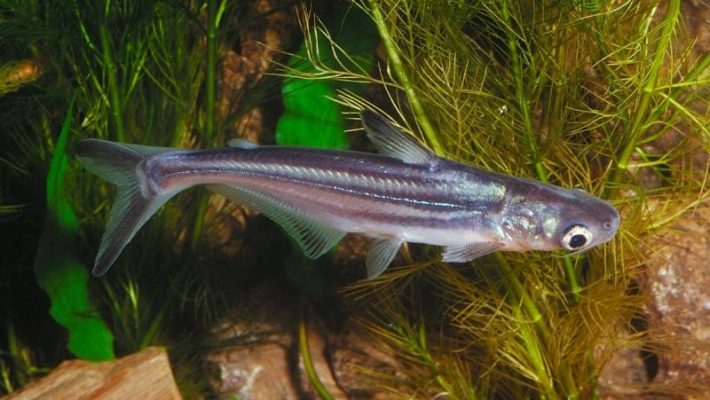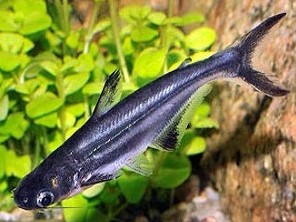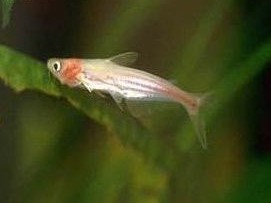Iridescent Shark

Table of Contents
- Introduction
- Physical Characteristics
- Habitat and Distribution
- Behavior and Life Cycle
- Aquaculture and Commercial Significance
- Conclusion
Introduction
The iridescent shark, scientifically known as Pangasianodon hypophthalmus or shark catfish, is a fascinating species of freshwater fish that has captured the attention of aquarium enthusiasts worldwide. Its unique characteristics and striking appearance make it a popular choice for both experienced and novice fishkeepers.
The iridescent shark gets its name from the mesmerizing iridescent scales that cover its body. These scales reflect light in a way that creates a shimmering effect, giving the fish an ethereal and captivating appearance. With its elongated body shape and streamlined design, the iridescent shark is built for efficient swimming, making it a graceful and agile swimmer in the water.
The iridescent shark holds significant value in the aquaculture industry, particularly in Southeast Asia. This region is known for its thriving aquaculture practices, and the iridescent shark plays a crucial role in its success.
In terms of economic value, the iridescent shark is highly sought after in the global market. Its meat is considered a delicacy in many countries, and its popularity has led to a substantial demand for iridescent shark products. Additionally, the iridescent shark’s ability to adapt to various farming conditions and its rapid growth rate make it an attractive choice for aquaculture farmers.
This article aims to provide a comprehensive overview of the iridescent shark, delving into its physical characteristics, habitat, behavior, conservation status, and its significance in the culinary world. By exploring these aspects, readers will gain a deeper understanding of this remarkable species and its multifaceted importance.
By examining the physical characteristics, habitat, behavior, conservation status, and culinary significance of the iridescent shark, this article aims to shed light on the various facets of this remarkable species. Through a comprehensive exploration, readers will gain a deeper understanding of the iridescent shark’s unique qualities and its significance in both natural and human contexts.
Physical Characteristics
Description of the Iridescent Shark’s Appearance
The iridescent shark, also known as Pangasianodon hypophthalmus or shark catfish, is a visually striking species of freshwater fish that captivates aquarium enthusiasts with its unique characteristics and appearance. Its name is derived from the iridescent scales that cover its body, giving it a shimmering and mesmerizing effect when light reflects off them.
The iridescent scales of this species are a result of a specialized layer of guanine crystals, which create a prism-like effect, causing the fish to exhibit a wide array of colors as light hits its body. These scales are not only aesthetically pleasing but also serve a functional purpose. They provide protection against predators by reflecting light and camouflaging the fish in its natural habitat.
In addition to its iridescent scales, the iridescent shark possesses an elongated body shape and a streamlined design, which allows it to move through the water with exceptional agility and efficiency. This sleek physique enables the fish to navigate swiftly, making it a formidable swimmer.
Size and Weight Variations
Adult iridescent sharks can grow to impressive lengths, reaching several feet in size. On average, they can measure between 3 to 4 feet, although some individuals have been known to exceed 6 feet in length. The size of an iridescent shark can vary based on factors such as age, genetics, and environmental conditions.
When it comes to weight, iridescent sharks can also exhibit variations. Juvenile fish typically weigh a few pounds, but as they mature, their weight increases significantly. Factors such as diet and habitat conditions can influence the weight of adult iridescent sharks. In some cases, these fish can weigh over 100 pounds, making them substantial and powerful creatures.
Unique Features such as its Forked Tail and Barbels
One of the distinguishing features of the iridescent shark is the presence of a distinctive black stripe that runs along its body, from the tip of its snout to the tail. This stripe adds to the fish’s allure and serves as a visual marker for identification.
The iridescent shark also possesses a forked tail, which aids in its swimming abilities. The forked tail provides the fish with increased maneuverability and control in the water, allowing it to make quick turns and changes in direction. This feature is essential for the iridescent shark’s survival, as it helps evade predators and catch prey efficiently.
Furthermore, the iridescent shark has barbels, which are sensory organs located near its mouth. These barbels help the fish detect food and navigate its surroundings. They are particularly useful in low-light conditions or murky waters, where visibility may be limited. The barbels play a crucial role in the iridescent shark’s ability to locate and capture prey, contributing to its survival in its natural habitat.
Overall, the physical characteristics of the iridescent shark, including its iridescent scales, elongated body shape, forked tail, and barbels, make it a visually stunning and well-adapted species in the aquatic world. These features not only contribute to its aesthetic appeal but also enhance its ability to thrive in its environment.
Habitat and Distribution
Natural Habitat of the Iridescent Shark
The iridescent shark, also known as Pangasianodon hypophthalmus or shark catfish, primarily inhabits the Mekong River basin in Southeast Asia. This expansive river system provides the ideal natural habitat for the species, offering the necessary conditions for their survival and reproduction.
The Mekong River basin is characterized by its diverse and dynamic ecosystem, making it one of the world’s most biologically productive rivers. The river’s strong currents, rich sedimentation, and extensive floodplains contribute to the unique environment that the iridescent shark calls home.
Within the Mekong River, the iridescent shark prefers the deeper sections where water flow is stronger and more stable. These areas provide ample food sources, such as small fish, crustaceans, and insects, while the sandy and muddy bottoms serve as ideal spawning grounds for the species.
Geographical Distribution and Range
While the Mekong River basin is the primary natural habitat of the iridescent shark, the species can also be found in other parts of Southeast Asia. Significant populations of iridescent sharks exist in rivers and waterways of Thailand, Cambodia, Laos, and Vietnam.
In addition to its native range, the iridescent shark has been introduced to other regions and countries for aquaculture purposes. Malaysia and Singapore, for example, have established iridescent shark farms to meet the growing demand for this species in the seafood market. These introductions have expanded the geographical distribution of the iridescent shark beyond its natural range.
Factors Influencing Habitat Preference
Several environmental factors influence the habitat preference of the iridescent shark. Water temperature is crucial, as the species thrives in warm tropical waters. The consistently high temperatures of the Mekong River basin provide the ideal conditions for the iridescent shark’s growth and reproduction.
Water quality is another important factor that influences the habitat preference of the iridescent shark. The species requires well-oxygenated water with low levels of pollutants and contaminants. The Mekong River’s natural filtration system, combined with its continuous flow, helps maintain the necessary water quality for the survival of the iridescent shark.
The availability of suitable food sources also plays a role in the iridescent shark’s habitat preference. The diverse ecosystem of the Mekong River basin ensures a plentiful supply of prey items, guaranteeing the species access to an abundant food source.
Overall, the iridescent shark’s habitat preference is closely tied to the unique characteristics of the Mekong River basin, including its water temperature, quality, and food availability. Understanding these factors is crucial for the conservation and management of this species, as well as for the development of sustainable aquaculture practices.
Behavior and Life Cycle
Feeding habits and diet preferences
The iridescent shark, being an omnivorous species, has a diverse and adaptable diet. Its feeding habits are influenced by both its natural environment and the availability of food sources in captivity. In the wild, iridescent sharks primarily feed on small fish, crustaceans, and insects. They are opportunistic predators, using their sharp teeth and powerful jaws to capture and consume their prey.
However, in captivity, iridescent sharks can be successfully fed a varied diet that includes both animal protein and plant-based foods. Commercially available fish pellets, flakes, and frozen foods are commonly used to meet their nutritional needs. These foods are formulated to provide a balanced diet that mimics the natural prey of iridescent sharks.
It is important to note that while iridescent sharks can consume plant-based foods, their preference lies in animal protein. This is because their natural diet in the wild consists mainly of small fish and crustaceans. Therefore, it is recommended to supplement their diet with high-quality fish or shrimp-based foods to ensure they receive the necessary nutrients for optimal growth and health.
Reproduction and mating behavior
The reproductive behavior of iridescent sharks is fascinating and complex. They are known to engage in elaborate mating rituals, which often involve courtship displays and territorial behaviors. During the breeding season, male iridescent sharks will compete for the attention of females by displaying their vibrant colors and engaging in vigorous chasing behaviors.
Once a male successfully courts a female, they will engage in a unique spawning behavior. Female iridescent sharks are known to lay their eggs in shallow waters, typically in areas with dense vegetation or submerged objects. The male will then fertilize the eggs externally by releasing his sperm over them. This external fertilization is a common trait among many fish species, including the iridescent shark.
Breeding iridescent sharks in home aquariums can be challenging due to their specific reproductive requirements. They require large tanks with appropriate water conditions, including the right temperature and pH levels, to successfully reproduce. Additionally, the availability of suitable mates can be limited, making it difficult to find compatible pairs for breeding purposes.
Growth rate and lifespan
The growth rate of iridescent sharks can vary depending on several factors, including their environment, diet, and genetics. In optimal conditions, iridescent sharks can grow rapidly, with juveniles reaching several inches in length within a few months. However, their growth rate tends to slow down as they mature.
In captivity, iridescent sharks can reach an average length of 3 to 4 feet, although some individuals have been known to grow even larger. It is important to provide them with adequate space to accommodate their size as they grow. Additionally, maintaining a balanced and nutritious diet is crucial for their growth and overall well-being.
The lifespan of iridescent sharks can also vary depending on various factors. In the wild, they are believed to have a lifespan of around 20 years. However, in captivity, where they are provided with optimal conditions and care, iridescent sharks have been known to live for up to 25 years or more.
It is worth noting that proper care and attention to their specific needs are essential for ensuring the longevity of iridescent sharks in captivity. Regular monitoring of water quality, providing a suitable diet, and maintaining an appropriate tank size are all crucial factors in promoting their growth and extending their lifespan.
In conclusion, understanding the behavior and life cycle of iridescent sharks provides valuable insights into their unique characteristics and requirements. Their omnivorous feeding habits, elaborate mating rituals, and growth patterns contribute to their overall adaptability and survival in both natural and captive environments. By providing the necessary care and attention, enthusiasts can enjoy the beauty and companionship of these remarkable fish for many years to come.
Aquaculture and Commercial Significance
Introduction to Iridescent Shark Farming
The practice of farming iridescent sharks in controlled environments for commercial purposes has gained significant traction in recent years. This method of aquaculture involves raising iridescent sharks in specially designed tanks or ponds, providing them with optimal conditions for growth and reproduction.
The increasing popularity of iridescent shark aquaculture can be attributed to several factors. Firstly, wild populations of iridescent sharks have faced significant declines due to overfishing and habitat destruction. Farming these fish in controlled environments helps alleviate the pressure on wild populations and contributes to their conservation. Additionally, iridescent sharks have a rapid growth rate, making them an attractive choice for commercial aquaculture operations.
Economic Value and Demand in the Global Market
Iridescent sharks hold substantial economic value in the global market, particularly in the seafood industry. Their popularity stems from their unique characteristics, such as their iridescent scales and elongated body shape, which make them visually appealing to consumers. The demand for iridescent sharks and their products, such as fillets and fish sauce, has been steadily increasing, both domestically and internationally.
In Southeast Asia, where iridescent sharks are native, they are considered a delicacy and are highly sought after in local cuisines. Their meat is prized for its firm texture and mild flavor, making it suitable for a wide range of culinary preparations. As a result, iridescent sharks have become an important commodity in the regional seafood market.
Challenges and Benefits of Iridescent Shark Aquaculture
While iridescent shark aquaculture offers numerous benefits, it also presents certain challenges that need to be addressed. One of the primary concerns is the potential environmental impact of large-scale farming operations. The discharge of waste and excess feed from aquaculture facilities can lead to water pollution and eutrophication, which can harm local ecosystems. To mitigate these issues, sustainable aquaculture practices, such as proper waste management and the use of efficient filtration systems, must be implemented.
Another challenge is the maintenance of optimal water quality and conditions within the farming facilities. Iridescent sharks require specific temperature, pH levels, and oxygen levels to thrive. Maintaining these conditions can be technically demanding and requires careful monitoring and management.
Despite these challenges, iridescent shark aquaculture offers several benefits. Firstly, it provides a sustainable alternative to wild-caught iridescent sharks, reducing pressure on their populations and contributing to their conservation. Additionally, aquaculture operations create employment opportunities and stimulate local economies, particularly in regions where iridescent sharks are farmed. Moreover, the controlled environment of aquaculture facilities allows for better disease control and improved fish health, resulting in higher quality and more consistent products.
In conclusion, iridescent shark aquaculture has emerged as a viable and sustainable solution to meet the increasing demand for these unique fish in the global market. While challenges exist, such as environmental concerns and maintaining optimal conditions, the benefits of aquaculture, including conservation efforts and economic opportunities, make it a promising industry. By implementing responsible and sustainable practices, iridescent shark aquaculture can continue to thrive while ensuring the long-term viability of this remarkable species.
Conclusion
This article has provided a comprehensive overview of the iridescent shark, highlighting its physical characteristics, habitat, behavior, conservation status, and its significance in the culinary world. Let us now summarize the key points discussed in each section, emphasizing the key aspects of iridescent sharks.
The iridescent shark is known for its unique appearance, with iridescent scales that reflect light and an elongated body shape designed for efficient swimming. It also possesses a distinctive black stripe along its body, along with a forked tail and barbels that serve specific purposes.
The iridescent shark primarily inhabits the Mekong River basin in Southeast Asia, with countries like Thailand, Cambodia, Laos, and Vietnam being its natural range. However, it has also been introduced to other regions such as Malaysia and Singapore. The species is influenced by environmental factors such as water temperature and quality when it comes to its habitat preference.
The iridescent shark is an omnivorous fish that consumes a varied diet, with a preference for animal protein and plant-based foods. Reproduction and mating behavior involve specific rituals and spawning, although breeding them in home aquariums can be challenging. The growth rate of iridescent sharks and their potential lifespan in captivity are also important considerations.
Iridescent sharks may face endangerment or threatened classifications due to human activities such as overfishing and habitat destruction. Habitat destruction and pollution, in particular, have a severe impact on their survival, with long-term consequences for the species. However, ongoing efforts and initiatives are being implemented to protect iridescent sharks and their habitats.
In conclusion, the iridescent shark holds significant importance in terms of its unique characteristics, conservation, and commercial value. It is crucial to emphasize the need for conservation efforts to protect iridescent sharks and their habitats. Sustainable practices in aquaculture and fisheries are essential to ensure the long-term survival of this species. The potential for future developments in understanding and utilizing iridescent sharks should be explored, and readers are encouraged to continue learning and exploring the world of these fascinating creatures.
By providing a comprehensive overview of the iridescent shark, this article aims to inform and educate readers about this remarkable species, its importance, and the need for its conservation.


